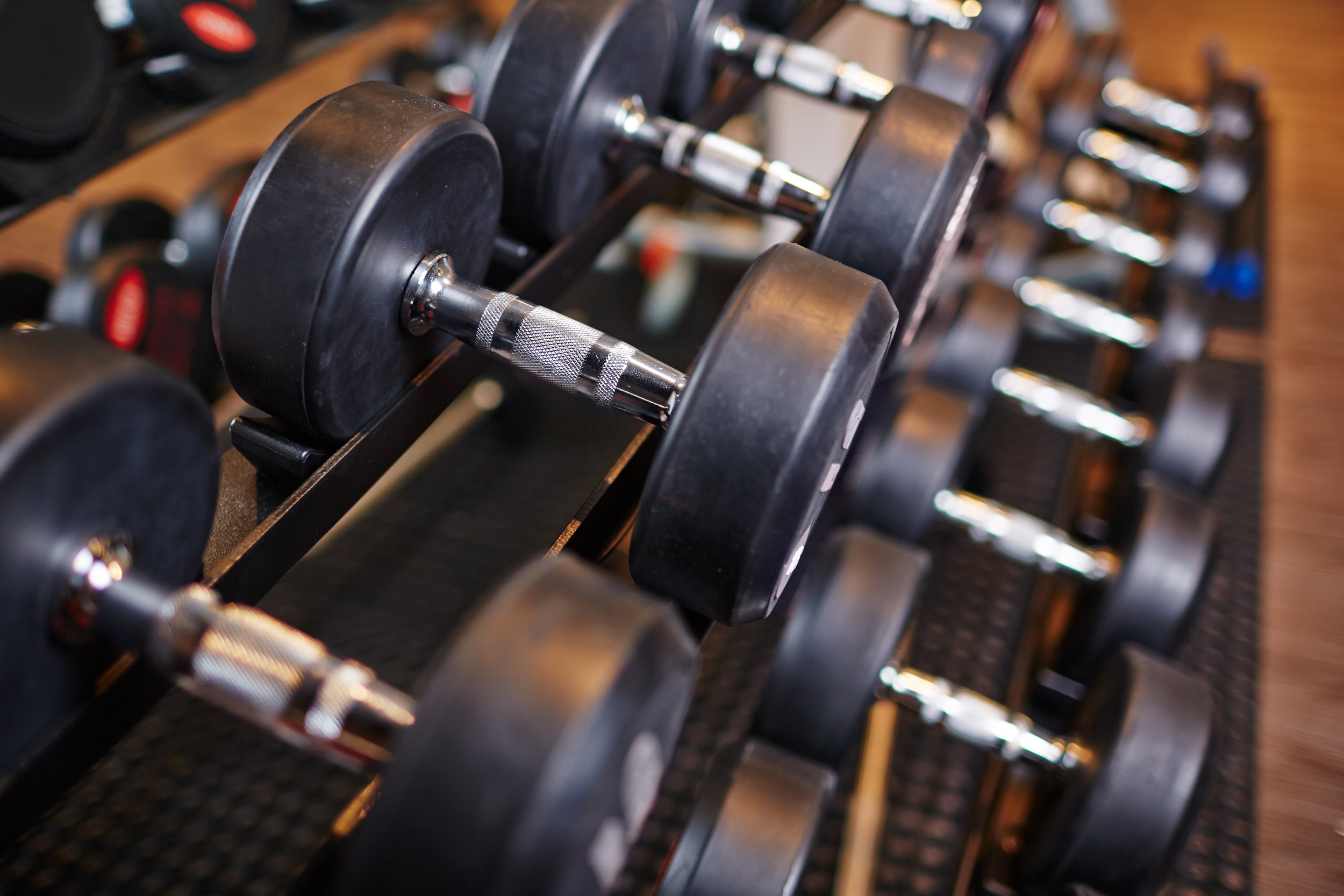You Should Buy Fractional Plates
Takeaway Points:
Fractional plates are lightweight plates (typically half pound incraments between 0.5 through 2.0lbs or their kilogram equivalents) that can be added to barbells or dumbbells to allow for a greater range of weight between full plates/dumbells.
Fractional plates can be great for people who are lifting lighter weights because it allows them to increase the weight by the recommended 1-5% rather than making big jumps in weight, like going from 5lbs to 10lbs dumbells - a 100% increase in weight!
Experienced and heavy lifters can also benefit from fractional plates because it can show the improvement in strength when gains have naturally slowed.
(Author’s note: This article is an updated version of an article originally published on 12/17/14. It has been overhauled to be much more comprehensive with multiple distinct lines of argumentation, and brought in line with our modern design standards.)
What are fractional plates?
In general, most gyms only have weight plates that go down to a certain weight - 2.5lbs for pound weight, or 1.25kg for kilogram weight. This means that since you need to put 2 plates on the barbell, one on each side to balance out, the smallest possible adjustment you can make to a barbell is double that minimum weight - 5lbs for pound weight, or 2.5kg for kilogram weight.
Fractional plates are plates which get even smaller than that - often, 2lbs, 1.5lbs, 1lb, and even as low as 0.5lb (and corresponding kilogram weights).
Likewise, there exist fractional plates for dumbbells as well. These plates are typically magnetized and designed to adhere to the dumbbell externally, or use some other way to fasten themselves to the dumbbell so that they can work with a wide range of dumbbells.
Fractional plates are not common in gym settings. Most gyms, even very hardcore gyms, will not have them, or if they do, they may not have very many.
However, these plates have a variety of uses which make them highly useful for many situations.
Beginners/Female Lifters/Slow Developing Movements
While 5lbs increases in weight may not feel like very much, they can often be way too big for many exercisers. In particular, very light individuals and beginner lifters may start out very weak, and not be able to handle very much weight.
In general, a good relative progression increase in weight might be in the range of 1-5% relative to your prior weight. This means that if you could previously bench press 100lbs, for example, then an increase of 5lbs = 5/100 = 5%. Likewise, if you bench press 200lbs, then an increase of 5lbs = 5/200 = 2.5%, even less. All of this is fine.
But let’s take someone whose bench press is 50lbs. For this person, a jump of 5lbs = 5/50 = 10%, a much bigger jump. This only gets worse, the lighter you get. But, if you have fractional plates, this ceases to be an issue. If you have 1lb fractional plates, for example, then your minimum jump is now 2lbs instead of 5lbs, only 4% in this example, and much more manageable.
Likewise, many dumbbell movements start off with very light weights, and struggle to develop quickly. This is also worsened by the fact that dumbbells typically offer 5lb minimum jumps per side (rather than 2.5lbs) so the result is worsened.
Common exercises like bicep curls, tricep extensions, and lateral raises all develop slowly, as do other more niche exercises like wrist curls, DB reverse flyes, and so on. With all of these exercises, adding weight can very quickly overwhelm the exerciser’s capacity to adapt.
Jumping for example from 5lbs to 10lbs dumbbells is a massive 100% relative jump. Jumping from 10lbs to 15lbs is a slightly less massive, but still massive 50% jump. With dumbbells, it’s not until you get to around 100lbs/hand that you start to see more reasonable 5% increases from an additional 5lb/hand jump.
As a result, it’s very common for lifters to get overwhelmed when trying to train using dumbbells, unless the dumbbells allow smaller 2.5lb jumps, or unless you have access to fractional plates.
More Precise Gains in Strength
Another useful application, is better strength gains.
Many strength programs rely on percentages for calculating working weights. For example, you may want to perform a certain number of sets and reps at 80% of your 1RM (one rep max, the primary measure of strength in barbell movements).
Normally, if you take pretty much any number and take 80% of that, you’ll get some number that’s not really usable. For example, if you bench press 235lbs as a 1rm, then 80% of that is 235 x 0.8 = 188lbs. Since the minimum jump is 5lbs, this means that you’ll need to round to the nearest 5lbs, and this could mean choosing either 185lbs or 190lbs.
However, this could mean less precision in your results.
In particular, sometimes changes in your strength from month to month - especially for more advanced lifters - can be very small. Say that your strength on your bench press increased from 235-236lbs. You may not be able to even tell this, because on a max test you can only test 235 and 240lbs. So, you can hit another max at 235 (and feel that your strength hasn’t changed) or fail at 240 (and feel that your strength hasn’t changed) when the reality is that you were getting stronger.
Likewise, even if you were able to tell that your strength was increasing, and you increased your working max from 235 to 236, this wouldn’t really change your working weights much in the following month. 236 x 0.8 = 188.8lbs - again, such a small difference, that you would either round it to 185 or 190, resulting in no change in your working weight for the following training cycle.
The application of fractional plates means that you can fine tune these numbers more precisely - you can see changes in your strength more precisely from month to month, and you can accordingly adjust your training more precisely to achieve the desired results.
Summing It Up
Fractional plates are commonly thought of as a thing specifically for women, and I wouldn’t hesitate to say that many men probably don’t use them because there’s a bit of ego involved. The precise application of fractional plates involves doing more math and being more careful with your training, and men tend to be more focused on just pushing harder or ignoring these smaller adjustments in favor of bigger ones over time.
Fractional plates can be a useful tool for anyone - big and strong men included. Because of their lightness, these plates can often easily be purchased and kept in your gym back for use in commercial gyms, or used to great effect in home gyms.
I’d recommend picking up a set of fractional plates today, if you care about maximizing your strength and muscle potential.
About Adam Fisher
Adam is an experienced fitness coach and blogger who's been blogging and coaching since 2012, and lifting since 2006. He's written for numerous major health publications, including Personal Trainer Development Center, T-Nation, Bodybuilding.com, Fitocracy, and Juggernaut Training Systems.
During that time he has coached thousands of individuals of all levels of fitness, including competitive powerlifters and older exercisers regaining the strength to walk up a flight of stairs. His own training revolves around bodybuilding and powerlifting, in which he’s competed.
Adam writes about fitness, health, science, philosophy, personal finance, self-improvement, productivity, the good life, and everything else that interests him. When he's not writing or lifting, he's usually hanging out with his cats or feeding his video game addiction.
Follow Adam on Facebook or Twitter, or subscribe to our mailing list, if you liked this post and want to say hello!
Enjoy this post? Share the gains!
Ready to be your best self? Check out the Better book series, or download the sample chapters by signing up for our mailing list. Signing up for the mailing list also gets you two free exercise programs: GAINS, a well-rounded program for beginners, and Deadlift Every Day, an elite program for maximizing your strength with high frequency deadlifting.
Interested in coaching to maximize your results? Inquire here.
Some of the links in this post may be affiliate links. For more info, check out my affiliate disclosure.






